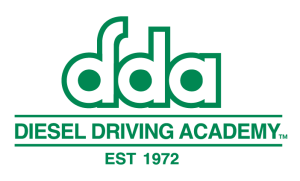The trucking industry involves driving many types of trucks and hauling trailers that carry a wide variety of cargo. As a truck driver, you are likely to find yourself towing goods of all shapes and sizes: from food items to entire houses, and everything in between.
Which type of cargo you are carrying will determine which of many trailer types you use. Trucking trailers vary significantly in terms of size, and each has different requirements and regulations, as does the cargo it carries. This means that each type of trailer brings with it a dramatically different driving experience, so it’s important to know what type of trailer you’re hitching to your rig before you get on the road.
At Diesel Driving Academy, we make sure that our drivers are well-equipped long before they get into the truck. As a start, we put together a list of eight common types of trailers that you will likely find yourself hauling during your time as a truck driver.
1. Standard Freight Trailer
This is the most common type of trailer—the enclosed, rectangular trailers typically associated with semi-trucks and used for traditional store shipping. These trailers protect their contents from the elements, as they are fully enclosed, and are used to carry boxed, crated, and palletized freight, which are unloaded using a forklift. They vary in length from approximately 28 to 53 feet and in width from 8 to 8.5 feet. They are generally between 12.5 and 13.5 feet in height. Most have an axle-to-wheel ratio of 2:8, but heavy loads often use a 3:12 or 4:16 ratio.
2. Refrigerated Truck Trailer
Also know as “Reefer” trailers, these cargo holders are insulated and refrigerated, in order to transport perishable and/or frozen goods, including food items and pharmaceuticals. Reefer trailers have cooling units installed, usually toward the front, to keep their contents cool and fresh. Reefer trailers usually have similar dimensions to standard trailers, with the addition of a fuel tank stored beneath the trailer.
3. Container Skeletal Carrier
Skeletal carriers are designed to be adjustable, so that they can accommodate containers of varying sizes. Their main purpose is to transport international cargo containers, which range from 20′ and 45′ in length. They carry 2:8, 3:12, and 4:16 axle/wheel configurations, changing depending on the load weight.
4. Standard Flatbed Trailer
Flatbed trailers have no roofs or sides, just a level plane. They are extremely versatile, which is a large part of their appeal. Flatbed trailers are designed to haul oversized cargo, and/or materials that need to be loaded or unloaded from the top or side of the trailer, rather than a smaller rear opening. Due to being uncovered, flatbed trailers must be packed and tarped correctly to protect the contents being hauled. These trailers vary in length, up to 48 feet.
5. Drop Deck “Gooseneck” Trailer
This type of trailer is also used to carry oversized or special cargo. These trailers are very similar to flatbed trailers, but include a raised bed, which mimics the look of a goose’s neck. They are used to carry cargo that requires a different base than the standard flatbed. Drop deck trailers include a ramp on the lower deck for loading and unloading.
6. Car Carrier Trailer
True to their name, car carrier trailers transport cars, trucks, and other vehicles. They are equipped with two levels, in order to hold multiple vehicles. When loading vehicles, you must be careful to make sure all vehicles end up in park with the brakes set, and are secured to the trailer, taking all safety precautions. A series of ramps is incorporated for easy loading and unloading, as vehicles are heavier and more specialized than the average cargo. These trailers can be enclosed, but are often open.
7. Deep Drop Furniture and Electronics Trailers
These two-tiered trailers are often employed to carry large and bulky, but relatively light cargo, such as furniture and electronics. They are specially designed to allow for a greater cargo capacity, featuring an additional, lower rear deck for extra space.
8. Timber Trailers (“Loggers”)
Commonly used in the logging industry, timber trailers transport logs. These trailers are very similar to flatbeds, but are also equipped with special, often rounded, vertical stakes specifically designed to hold logs in place. An attached crane is used to load large logs.
Learn More
Of course, this list doesn’t cover every type of trailer. There are many other specialized trailers you may come across if you choose a career in trucking. Each run is a new experience and takes close attention when determining what special skills you may need to successfully maneuver the truck and trailer before you. We at Diesel Driving Academy hope to get the opportunity to teach you about each and every one of them.
If this information has been helpful in your journey toward becoming a truck driver, we would love to hear from you. Please contact us through the form on this page for more information, and to find out how you can become one of our success stories.
*This blog was originally published in 2015 and has been updated to stay current.*
